
Manaslu Treks
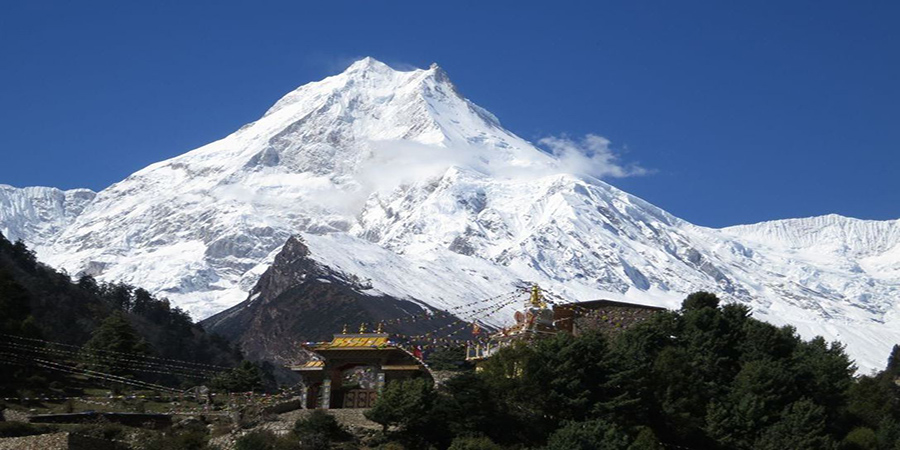
Manaslu Treks is one of the least explored yet adventurous journeys, to begin with. Manaslu region lies in the northern part of Nepal in the Gorkha district. The Makalu region comes under the Makalu Conservation Area solely dedicated to conserving natural resources and promoting eco-tourism. Manaslu trekking in the region is a suitable option for trekkers wanting to explore the least traveled route and off-beat compared to other popular routes of Nepal. Manaslu Trekking route is peaceful, less crowded, and challenging.
Manaslu Circuit Trek, Manaslu Rupina La Pass Trek, Manaslu Two Passes Trek, and Tsum Valley Trek are some of the options to perform under the Manaslu treks in the Manaslu region. The four options have their specialty to offer.
Manaslu Rupina La Pass
The Rupina La Pass Trek circumnavigates Mt. Manaslu, Himal Chuli Peak, Buddha Himal, Langtang Himal Ranges, and the Ganesh Himal Ranges. The highest elevation of Rupina La Pass is 4720m. Throughout the trail, witness the picturesque landscapes, and green valley, and walk past verdant forests and diverse flora and fauna in the vicinity of Manaslu Conservation Area.
Manaslu Circuit Trek
Manaslu Circuit Trek commences from Arughat. The specialty of this trek is that it covers six climatic zones. Trekkers can experience trekking from lush subtropical vegetation to alpine vegetation. Larkya La Pass (5106m) is the highest elevation in the Manaslu Circuit Trek.
Tsum Valley Trek
Tsum Valley is a Buddhist pilgrimage valley rich in ancient culture, art, and religion. Tsum Valley trek offers insight into the culture, tradition, and lifestyle of the natives and gets them to learn more about Buddhism. The main attraction is a trek to the Ganesh Himal Base Camp (4200m) along with spectacular views of Mt. Manaslu and other surrounding peaks.
Manaslu Two Passes Trek
The most adventurous trek in the Manaslu region is Manaslu Two Passes Trek. This challenging trek is a combination of two high passes Larkya La (5106m), and Thorong La Pass (5416m). Trekkers start the trekking on the Manaslu region’s off-beat trail and end in the Annapurna region’s well-developed trail. Hence, they experience the natural beauty of both regions and get stunning views of both the Manaslu and Annapurna ranges on this trek.
Overall, the Manaslu treks is a lifetime experience abundant with rich culture, unexplored natural beauty, off-beat trails, and the highest elevations with some amazing breathtaking sceneries.
Frequently Asked Questions (FAQs)
How is the accommodation in the Manaslu Treks?
Basic but comfortable teahouses or guesthouses. Bathrooms are mostly outside. You must pay extra for the use of services like Wi-Fi, hot bucket water, laundry, and charging devices.
What type of meals do we get?
Meals are basic but good for your health. You get a full 3-course meal throughout the trek. Nepali Dal-Bhat is a chief dish that is a good source of energy. You won’t get a variety of dishes like in the city but some options like noodles, eggs, soup, roti (bread), and hot drinks are there.
Can we get to eat meat?
Tibetan Buddhists live in the Manaslu region. They follow Buddhism and hence killing animals is strictly prohibited in most parts of the region. So, you may hardly get to eat meat.
Is the drinking water safe?
Yes, drinking water is safe. It is fresh and directly from the streams. You can also fill water from the taps throughout the trail. If you don’t like tap water, purchase bottled water. But, if you have doubts and for safety purposes, you can use water purification kits. Or, fill boiled water at teahouses paying an extra charge.
Quick Tip: Always carry a durable water bottle for ease.
What to do in the peak seasons?
It is always a good idea to book in advance during peak seasons. Otherwise, you have to share rooms with others which you might not prefer.
How are the phone and internet networks?
The phone and internet works are stable and work well in the lower regions. But, in the higher regions, it is hard to get phone and internet networks. But, no need to worry as there is a satellite phone facility in case of emergency.
What kind of transport do we use?
Public or private vehicles are the means of transport for the Manaslu treks. Since the region is the least developed, there are no airways.
How many types of Manaslu treks are there?
Mainly we have four types of Manaslu treks. They are:
- Manaslu Rupina La Pass Trek
- Manaslu Circuit Trek
- Manaslu Two Passes Trek
- Tsum Valley Trek
What are the highest point and start and end points of different Manaslu treks?
a. Manaslu Rupina La Pass Trek
Highest point: 4720 m, Rupina La Pass
Trek start: Trishuli Bazaar
Trek end: Gorkha Bazaar
b. Manaslu Circuit Trek
Highest point: 5106 m, Larkya La Pass
Trek start: Arughat
Trek end: Besisahar
c. Tsum Valley Trek
Highest point: 4200m, Ganesh Himal Base Camp
Trek start: Soti Khola
Trek end: Arughat
d. Manaslu Two Passes Trek
Highest point: 5416, Thorong La Pass
Trek start: Soti Khola
Trek end: Jomsom
What compulsory permits do we require for Manaslu Treks?
The permits are compulsory for Manaslu treks. Manaslu Restricted Area Permit (RAP), Manaslu Conservation Area Permit (MCAP), Annapurna Conservation Area Permit (ACAP), and Tsum Valley Restricted Area Permit (RAP) are our required Manaslu trek permits. But, permits are different for different routes. They are:
a) Manaslu Circuit Trek, Manaslu Two Passes Trek, & Manaslu Rupina La Pass Trek require permits= Manaslu RAP, MCAP, & ACAP
b) Tsum Valley Trek requires permits = Tsum Valley RAP, & MCAP
Trekkers can also combine Tsum valley with Manaslu Circuit Trek.
c) Tsum valley trek with Manaslu Circuit requires = Manaslu RAP, MCAP, ACAP, & Tsum Valley RAP
How much do the Permits Cost?
The permit costs are listed below:
a. Manaslu Restricted Area Permit (RAP)
- USD 100/week per person + USD 15/person (each day after a week) [Sep-Nov]
- USD 75/week per person + USD 10/person (each day after a week) [Dec-Aug]
b. Manaslu Conservation Area Permit (MCAP)
- Foreigners- USD 30/person
- SAARC- NPR 1000/person
c. Annapurna Conservation Area Permit (ACAP)
- Foreigners- USD 30/person
- SAARC- NPR 1000/person
d. Tsum Valley Restricted Area Permit (RAP)
- USD 40/week per person + USD 7/person (each day after a week) [Sep-Nov]
- USD 30/week per person + USD 7/person (each day after a week) [Dec-Aug]
Do we require Travel Insurance?
Travel Insurance is compulsory. It is a safety net for travelers against unforeseen events. Travel Insurance must cover all medical emergencies, flight cancelations, emergency evacuations, loss of luggage, and altitudes over 3000 m for Manaslu treks.
How long does it take to issue the permit? Where can we issue the permit?
It only takes a few hours to issue the permit. You can issue the permits in Kathmandu from Nepal Tourism Board, Kathmandu. Your travel agency takes care of all the permit issues. You only need to submit the following documents to the travel agency.
- Passport photocopy (at least 6 months validity)
- Passport size photos- 4
- Nepali Visa (must have arrival stamp)
- Travel Insurance papers (all essential things must cover)
- Photocopy of Flight tickets
- Agreement Letter to trekking company and Immigration Head
What is the best time for Manaslu Treks?
The best time for Manaslu treks is Spring (Mar-May) and Autumn (Sep-Nov) seasons. It is because the days are sunny, the skies are clear, and the weather is pleasant. We recommend you plan carefully if you want to trek during winter and rainy seasons as the weather is not favorable.
How difficult are the Manaslu treks?
We rate the difficulty of the Manaslu treks as moderately challenging. Manaslu is a remote region and less developed. The trails are rough, and off-beat, and contain several ascend and descend. Other factors like high elevations, changes in climate, and unavailability of all major facilities make this trek difficult.
Can we complete the Manaslu treks?
Yes, why not. It is challenging but possible. With proper planning and guidance, you can complete the Manaslu treks. Do some physical exercises, take some physical training, do day hikes, and eat a healthy diet. Take necessary health tests and consult a doctor before trekking to high altitudes. Be mentally and physically prepared for the trek.
Is Acclimatization rest compulsory for Manaslu treks?
Yes, acclimatization rest is compulsory for Manaslu treks. It helps the body to adjust to the surroundings and prevent altitude sickness. Manaslu is a remote region and high altitudes, trail structure, and changes in climate impact the trekker’s health. It is best to take acclimatization rest if you don’t want to compromise your health.
Can I get Altitude Sickness?
Altitude sickness is common at a high altitude above 2500m. In the mountains of Nepal, altitude sickness is common. It can happen to anyone. It is curable so no need to panic. First, we need to acknowledge its symptoms and then follow preventive guidelines to prevent it.
What are the Symptoms & Preventive Guidelines of Altitude Sickness?
Altitude sickness has primary and extreme symptoms and is:
Primary: Headache, nausea, gasping, appetite & sleep loss, dizziness, fatigue, vomiting
Extreme: primary symptoms and hallucinations & unconsciousness
Preventive Guidelines of Altitude Sickness
- Immediately inform the guide
- Warm-up, and body stretch before the trekking journey
- Drink water and Hydrate yourself at regular intervals
- Frequent urination throughout the journey
- Ascend slowly and gradually
- Take plenty of rest and sleep
- Avoid salty foods, alcohol, and smoking
- Descend immediately when it’s difficult/uneasy
- Take medicine consulting a guide
Is guide compulsory and what about safety in Manaslu treks?
Manaslu is a specially restricted region. Hence, a compulsory licensed guide is required. Solo trekking is strictly prohibited and at least there should be two trekkers for a Manaslu trek. Guides are also there for your safety. They are well-trained and have years of experience. They know the region very well and are technically competent. They always carry safety kits and essential equipment & gear with them. The guide takes care of you as well as looks after all the necessary arrangements to make your trek journey smooth and hassle-free.
What is the Porter Luggage Limitation?
The porter luggage limitation is a maximum of 15 kg per trekker. The porter carries the luggage of two trekkers.
What Equipment do we require for Manaslu treks?
Some essential equipment checklists are as follows:
- Shoes: Pair of hiking boots, Rubber sandals
- Clothes: Windcheater jacket, Thermals, Down Jacket, Fleece, Long sleeve shirts, Gloves, Towels, Inner garments, Trekking pants, Trousers, Shorts, Socks
- Accessories: Sunglasses, Ski Goggles, Hats/Caps, Beanie, Sunscreen, Lip Balm, Head Lamp, Pocket Knife, Personal Hygiene &Toiletries
- Equipment: Warm Sleeping bags, Map, Trekking poles, Duffel bag
- Medicine Kit: Wash Kit, First-Aid Kit, Blister Repair Kit, Medicines for preventing Altitude sickness, Prescribed Medicines (Personal use)
- Rainy season: Waterproof clothes, boots, Raincoat, Anti-leech socks
- Winter Season: Woolen clothing items (light)
- Extras: Heat/Leak proof water bottles, Water Purifying solution (Iodine based), Water filters, Insulated cup/flask, Map, Binoculars, Travel Documents, Sewing kit, Cash, Extra batteries, Power bank, Pen, Diary, Book, Reusable (spoon, cup, plate), Reusable bags, Large Waterproof Disposable Bags, Snacks (Choco-bars, Mints, Nuts, Granola Bars)
Note: It is best to bring the clothes and essential equipment from your home from the provided checklist. Also, you can buy or rent equipment and clothes in Kathmandu. You can customize the checklist as a necessity.


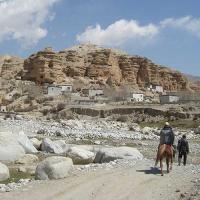
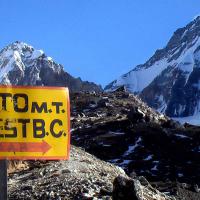
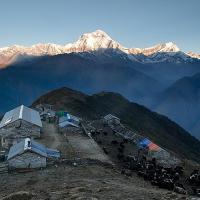
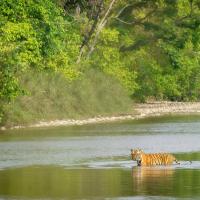
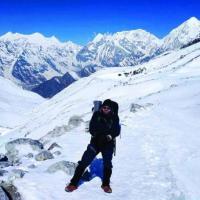
Post your comment